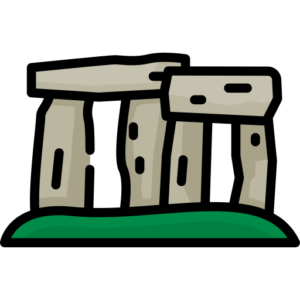Malabo, Equatorial Guinea
Region: Malabo is located in the province of Bioko Norte
Geographic Coordinates: 3.750000, 8.783300
Temperature Range: 22.0°C to 32.0°C (72°F to 90°F)
Climate: Tropical climate with high temperatures and humidity year-round, and two rainy seasons from February to May and September to December.
Population: 187302
Language: Spanish
Malabo is the capital of Equatorial Guinea, A small country located in Central Africa. The city is situated on the northern coast of Bioko Island, Which is one of the five islands that make up Equatorial Guinea. Malabo was founded by Spanish colonizers in 1827 and has since then become an important center for commerce, Politics, And culture. One of Malabo’s most notable features is its unique architecture. Many buildings in the city were constructed during its colonial period and still retain their Spanish colonial style.
For example, Visitors can admire beautiful examples of Spanish colonial architecture at the Presidential Palace and Independence Square while exploring the city. Malabo also has a rich cultural heritage with a diverse population made up mainly of Bantu tribes such as Fang and Bubi people who have lived on Bioko Island for centuries. Visitors to Malabo can experience traditional music and dance performances at various festivals throughout the year or visit local museums to learn about Equatorial Guinea’s history.
The city boasts several natural attractions that draw tourists from all over the world including Pico Basile National Park which covers over 300 square kilometers containing some of Africa’s highest peaks. Visitors can hike through lush rainforests teeming with wildlife or explore volcanic craters formed millions of years ago. In addition to natural beauty, Malabo offers plenty of opportunities for relaxation and indulgence with several luxury hotels where guests can enjoy spa treatments or dine at gourmet restaurants serving both local cuisine as well as international dishes.
However, Despite these attractions there are also challenges facing Malabo as a developing nation still struggling with poverty despite being rich in oil resources . Many residents lack access to basic amenities like clean water or electricity while corruption remains rampant within government institutions causing disparities between social classes within society . Overall though , Malobo remains an intriguing destination for travelers looking to experience a unique blend of culture, History, And natural beauty.’


Important Landmarks
- Malabo Cathedral
- Presidential Palace
- Fort Santa Isabel
- Independence Square
- Monte Alen National Park
- Pico Basile National Park
- Casa Verde Museum
- La Paz Waterfall
- Playa de Arena Blanca beach
- Akanda National Park

Primary Industries
- The major industries and businesses in Malabo, Equatorial Guinea include:
- Oil and gas exploration, production and refining
- Construction
- Telecommunications
- Banking and finance
- Tourism
- Agriculture
- The country’s economy is heavily dependent on its oil reserves which account for most of its export earnings.
- Additionally, the government has been investing in diversifying the economy by promoting other sectors such as:
- Fisheries
- Mining
- Spanish colonization: Malabo was founded by the Spanish in 1827 and was one of their main colonial settlements in Equatorial Guinea.
- Independence movement: In the 1950s and 1960s, there were several movements for independence from Spain in Equatorial Guinea, including in Malabo.
- Francisco Macías Nguema: Macías Nguema was the first president of independent Equatorial Guinea and ruled from 1968 until his overthrow in a coup d’état in 1979. He was known for his brutal dictatorship and human rights abuses.
- Teodoro Obiang Nguema Mbasogo: Obiang has been the president of Equatorial Guinea since he overthrew Macías Nguema in 1979. He has also been accused of human rights abuses and corruption during his long tenure.
- African Cup of Nations: Malabo hosted several matches during the African Cup of Nations football tournament in both 2012 and 2015.
- Cathedral Basilica de Santa Isabel: This cathedral is a notable landmark in Malabo that was built by Spanish colonizers between 1897-1916.
- Bight of Biafra slave trade route: The Bight of Biafra slave trade route passed through Malabo during the transatlantic slave trade era, with many enslaved Africans being transported through its ports to other parts of the world.
- Centro Cultural de España en Malabo (CCEM)
- National Museum of Equatorial Guinea
- Monumento de la Independencia
- Malabo Cathedral
- Palacio Presidencial de Malabo
- Pico Basilé National Park
- Monte Alen National Park
- Playa Arena Blanca
- Bata Market
- Luba Crater Scientific Reserve
- Sony Ela Nguema: Founded in 1992, Sony Ela Nguema is one of the oldest football clubs in Equatorial Guinea. The club has won several domestic titles including two Copa de la Liga Nacional championships.
- Atlético Semu: Founded in 2006, Atlético Semu has quickly risen to become one of the top football clubs in Malabo. They have won two league titles and one cup championship.
- Deportivo Mongomo: Based in Mongomo, a city located about 150 km from Malabo, Deportivo Mongomo is another prominent football club in Equatorial Guinea. They have won three league titles and two cup championships.
- CD Elá Nguema: Formed by a group of young players from different parts of the country, CD Elá Nguema has become a force to reckon with on the national scene since its inception in 2010.
- Estrellas de Evinayong: Although based outside Malabo, Estrellas de Evinayong is one of the most successful football clubs from Equatorial Guinea. They have won six league titles and four cup championships since their formation in 1980.
- Independence Day – October 12th
- National Day of Unity – August 3rd
- International Women’s Day – March 8th
- Africa Day – May 25th
- Feast of the Assumption of Mary – August 15th
- Christmas and New Year’s celebrations
- Carnival de Malabo
- Festival Internacional de Cine de Guinea Ecuatorial (International Film Festival of Equatorial Guinea)
- Bioko Island Malaria Elimination Campaign
- Expo-Equatorial Guinea, an annual trade fair showcasing local products and services
- Sopa de pescado (fish soup)
- Fufu (a starchy dough made from cassava or yam)
- Pounded plantains with fish or meat stew
- Grilled chicken or fish with spicy sauce
- La Luna Restaurant
- El Parador Restaurant
- Restaurante El Patio
- Restaurante Los Amigos
- Cocoloco Café and Bakery
- Parque Nacional de Malabo (Malabo National Park)
- Playa de Arena Blanca (White Sand Beach)
- Paseo Maritimo (Seaside Promenade)
- Estadio La Paz (La Paz Stadium)
- Plaza de la Mujer (Women’s Square)
- Centro Cultural Ecuatoguineano (Equatorial Guinean Cultural Center)
- Parque Acuático Djibloho (Djibloho Water Park)
- Jardín Botánico y Zoológico de Malabo (Malabo Botanical and Zoological Garden)
- Campo Internacional de Golf en Sipopo (Sipopo International Golf Course)
- Piscina Olímpica Nacional La Libertad 25m x 50m Olympic Swimming Pool

Noteable History
Overall, these events and people have played a significant role in shaping both the history and modern-day identity of Malabo as well as Equatorial Guinea as a whole.

Museums and Things To See


Sports Teams
Apart from football, there are also basketball and volleyball teams that participate in various local leagues and tournaments across Malabo and other regions of Equatorial Guinea.

Cultural Events

Cuisine
Food in Malabo, Equatorial Guinea
Popular Restaurants in Malabo, Equatorial Guinea

Parks and Recreation






